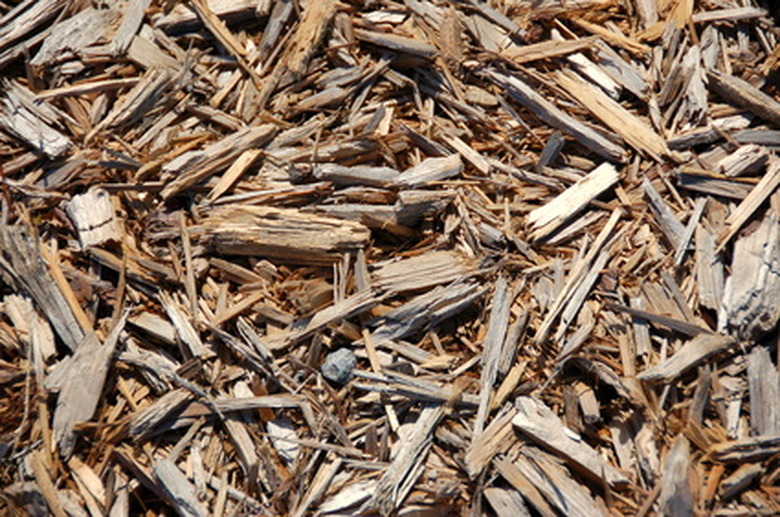Pine Vs. Cedar Mulch
Mulch blankets the soil and protects from frost, retains water and returns nutrients to the soil. There are many different types of mulch, each with a slightly different function. Pine and cedar mulches are both wood-chip mulches, but they benefit the soil differently and should be used in different parts of your garden.
Benefits of Mulch
Mulch comes in many forms, and acts as a protective layer for both the soil and a plant's roots. Several inches of mulch added to your soil before the first frost will insulate your plants' roots and insure that they survive the winter. Wood mulch also breaks down and replenishes the soil's nutrients that the plants use to grow and flower each year. A thick layer of mulch around established plants also discourages weed growth.
- Mulch blankets the soil and protects from frost, retains water and returns nutrients to the soil.
- Mulch comes in many forms, and acts as a protective layer for both the soil and a plant's roots.
Pine Mulch
Pine is a soft wood that breaks down more easily than the hard wood mulches, meaning that it won't last as long as a hard wood mulch such as cedar. Because of this, it is better used in areas that either have a lot of plant turn-over or are replanted each year, or in areas with a high growth volume of plants where the plants are using a lot of nutrients. In either situation, it is best to add a new layer of pine mulch each fall as the temperatures begin to cool down.
Cedar Mulch
Cedar mulch is a hardwood mulch that does not break down easily. Because of this, it is best used on established plants that grow slowly, and in areas where there is not much plant turn over. Cedar mulch is commonly used around shrubs and grown trees, and not on vegetable patches. Cedar mulch is also suitable for lining your garden paths, since it is very long-lasting and won't break down easily when it is stepped on.
- Pine is a soft wood that breaks down more easily than the hard wood mulches, meaning that it won't last as long as a hard wood mulch such as cedar.
- Because of this, it is best used on established plants that grow slowly, and in areas where there is not much plant turn over.
How to Apply
Wood mulch is best applied in the fall to protect your plants from heavy rain and frost. It insulates the soil and prevents a snap freeze from damaging your plants' roots. You should cover all exposed and unplanted ground with at least 2 inches of mulch. Don't worry about using too much mulch as it will eventually break down and need to be reapplied anyway. In the spring it is better to use a lighter mulch on vegetable and flower beds that will break down more easily and return nutrients to the soil as plants use them.
Tips
Pine is an acidic wood, and even though it takes time to break down it may still affect the pH of your soil, so you should be careful not to put it around any plants that are very sensitive to acidic soils.
